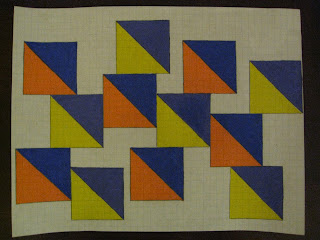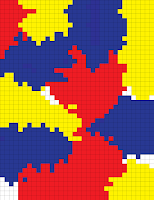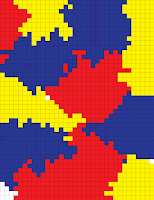I was inspired by the triangular patterns of Sol Lewitt'a famous white sculptures, but decided I would create a central basis of half circles to my system to add some dimension and visual interest. I originally started with sheet #2 of my system, a square rotated 45 degrees. I then created a triangle measuring 1/2 a block, with the vertex of each at the center of each side of the square. This created a polygon: my pattern would progress from square to polygon continuously (the only disruption to this pattern would be the first sheet: I had to move backwards 1 in order to prevent sheet #10 from going off the page). After this initial polygon was created, I connected the outer corners to produce another square. The triangles growing outward from the squares to create the polygons increase in size as the system progresses: the first is 1/2 a square high, the second 1 square, then 2, then 3. I connected inner triangles to the outer squares systematically to provide more balance within the system. The result were manalic geometric patterns that have an interesting quality: the culmination of several lines at each point create a dynamic "glowing" effect. For this reason, I decided after two trials that color would diminish that effect. I instead colored my system as simply as possible, with a gold marker. I found this actually accentuated the effect.

















































